11 Joyful Flowers That Start with J + Growing Guide Charts

This post follows our research editorial guidelines.

Jocular flowers bring a jolt of jubilation to any garden. Juicy with nectar, pollinating insects and birds jealously jostle to join the japery. Judging the best for your joint doesn’t need to be joyless. Let’s journey through the jumble and enjoy their jazzy colors and joyous perfumes.

I’m jumping along my jotted list of the jewels among flowers, jetting along in alphabetical order. Join me at the letter ‘J’!
Quickly Find Flowers That Start With J
1. Jacob’s Ladder (Polemonium reptans)
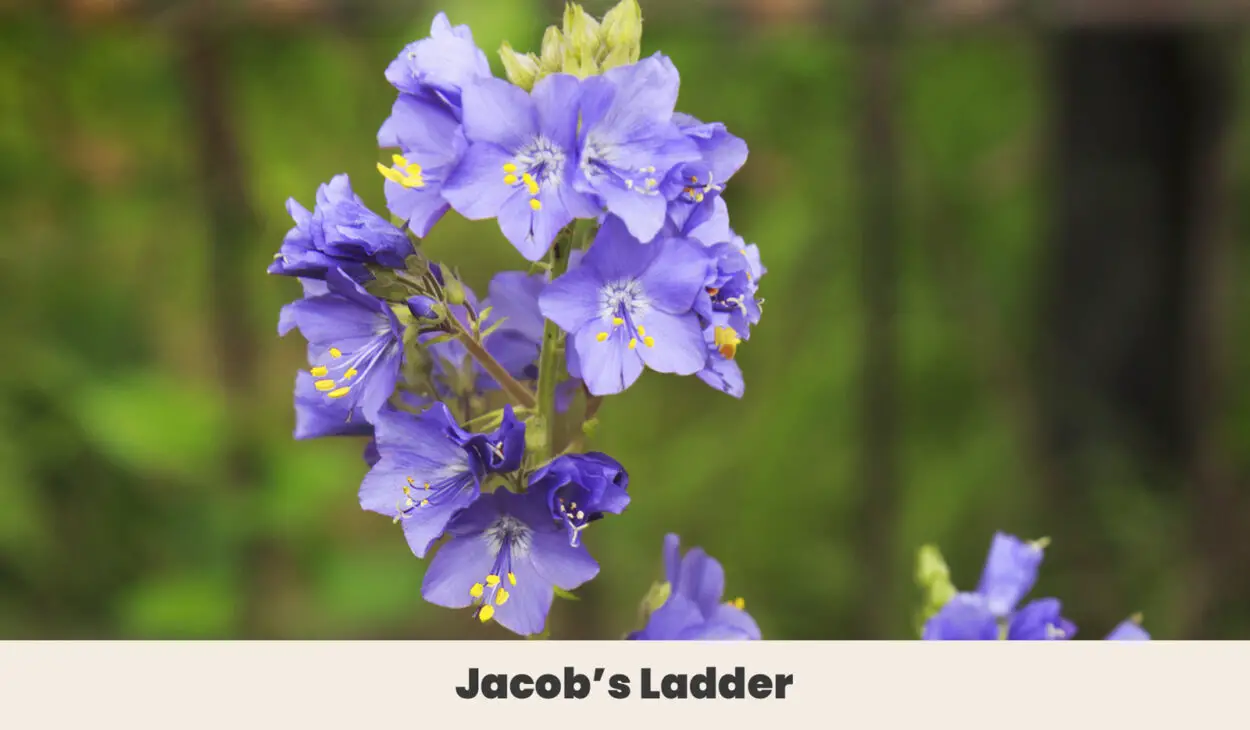
The Jacob’s Ladder is a sprawling ground cover native to the eastern parts of the United States. It’s sometimes called an ‘ephemeral’, a short-lived annual that appears as if by magic after the last frost and wilts away to nothing by the dog days of summer.
Its flowers are an unusual shade of delicate mauve-tinged blue, and appear at the end of drooping stems. While it’s often called a creeping plant, it’s more of a sprawler, resting its laconic leaves on the ground.
| Botanical Name: | Polemonium reptans |
| Growth Rate: | Moderate |
| Native Range: | Eastern United States |
| Hardiness Zones: | 3 to 8 |
| Soil Needs: | Organically rich, moist soils |
| Exposure: | Full sun to partial shade |
| Blooming Period: | Late spring to early summer |
| Water needs: | Moderate |
2. Japanese Iris (Iris japonica)
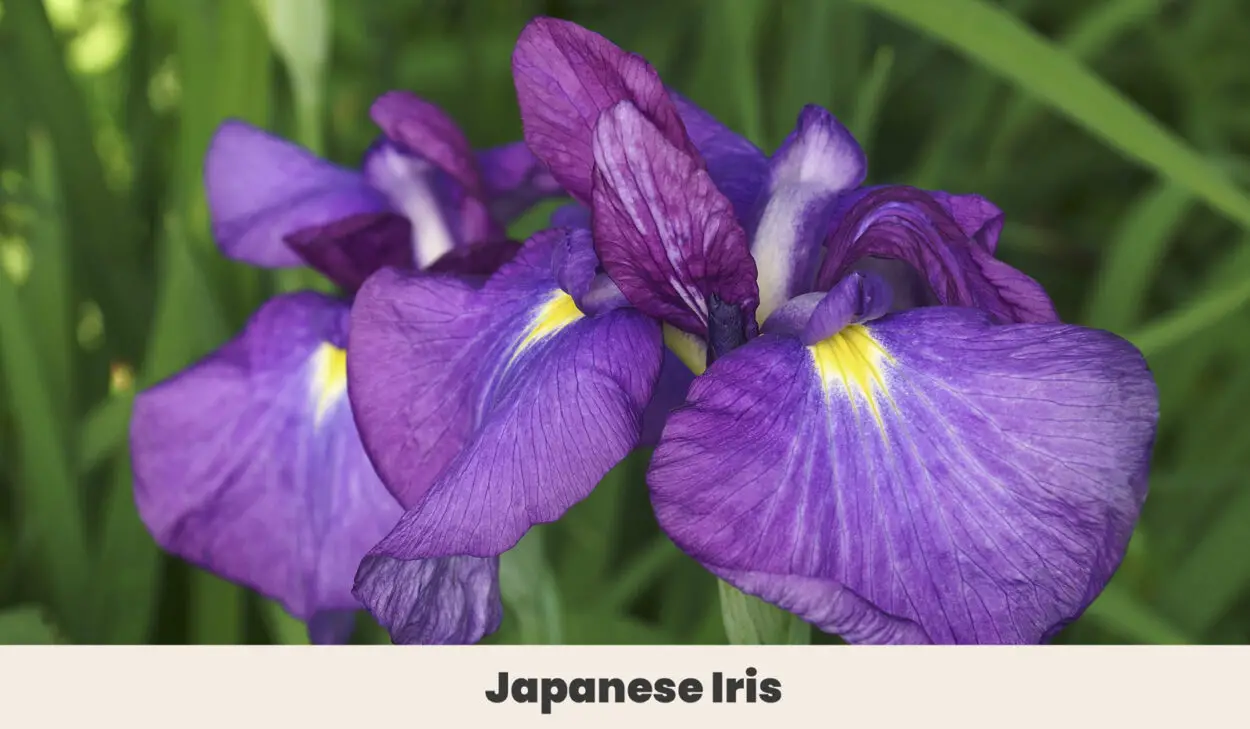
The Japanese iris is an elegant, almost architectural bloom, pale blue with purple and gold patterned petals. They grow in ever-expanding clusters from a fleshy root known as a rhizome.
It’s a bit like a bulb as it allows the plant to spread readily. They’re an excellent choice for shaded gardens calling out for a touch of sophistication and are particularly attractive when mass planted.
| Botanical Name: | Iris japonica |
| Growth Rate: | Moderate |
| Native Range: | Japan and China |
| Hardiness Zones: | 7a to 9b |
| Soil Needs: | Tolerates most soil types if drainage needs are met |
| Exposure: | Partial shade |
| Blooming Period: | Late spring |
| Water needs: | Moderate, drought tolerant once established |
3. Jewelweed (Impatiens capensis)

Also known as the spotted touch-me-not, jewelweed flowers are a late-season treat for native bees and butterflies. It’s a wildflower native to North America and is a hardy grower, so vigorous it often shows up along roadsides and other disturbed areas.
While I love it for its toughness and the vital nectar it provides pollinators, be mindful of where you plant it as it can break out of gardens and take over wild places.
| Botanical Name: | Impatiens capensis |
| Growth Rate: | Fast |
| Native Range: | North America |
| Hardiness Zones: | 2a to 11b |
| Soil Needs: | Moist, organically rich soils especially clay |
| Exposure: | Partial to full shade |
| Ease of Care: | Moderate |
| Blooming Period: | Summer to fall |
| Water needs: | High |
4. Jewel Orchid (Ludisia discolor)
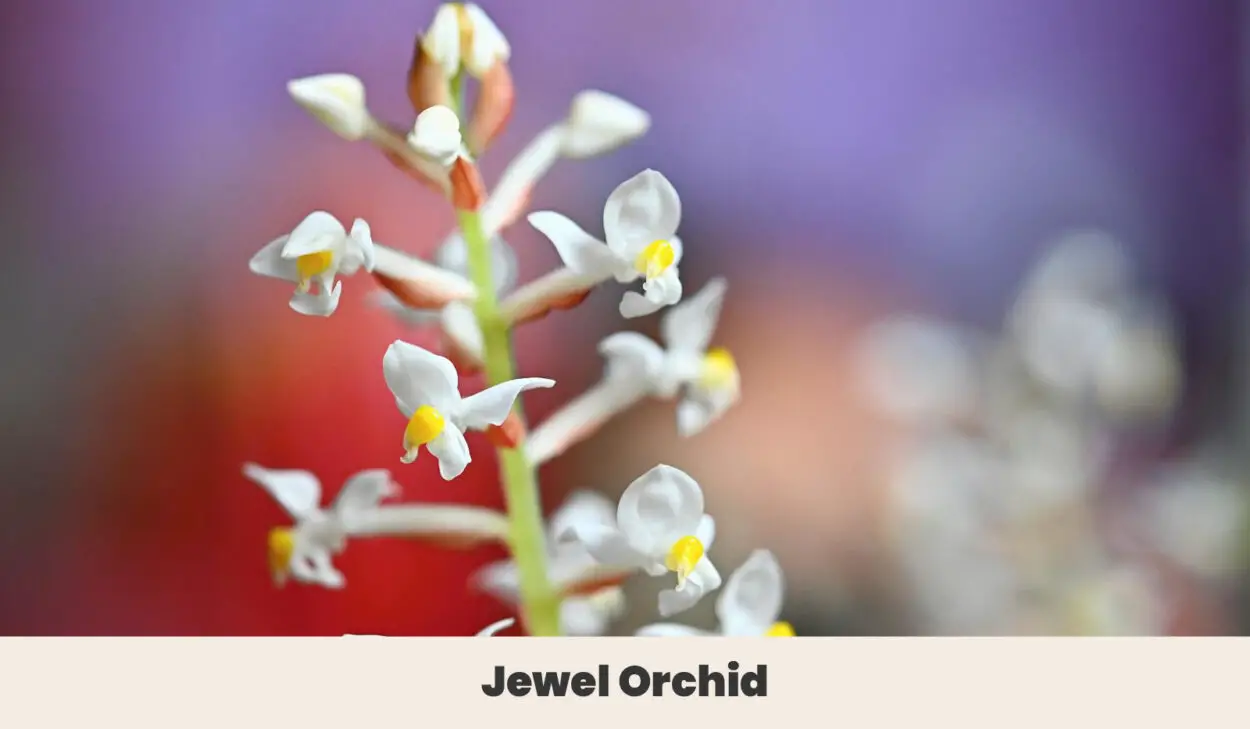
Few flowering plants have leaves as captivating as those of the jewel orchid. Its white star-shaped blooms positively glow against deep green foliage, pinstriped in gold. They always put me in mind of Art Deco interiors, with precision lines and rich, velvety darkness.
They’re truly tropical, so for most, they’re best kept as an indoor plant. They love humidity, so consider placing them in bathrooms and ensuites where they bring an effortless touch of sophistication.
| Botanical Name: | Ludisia discolor |
| Growth Rate: | Moderate |
| Native Range: | China, Southeast Asia, and Indonesia |
| Hardiness Zones: | 11-12 |
| Soil Needs: | Loamy-free draining soils. Best grown in containers |
| Exposure: | Partial shade |
| Blooming Period: | Spring |
| Water needs: | Moderate |
5. Jerusalem Sage (Phlomis fruticosa)

Circular clusters of yellow Jerusalem Sage flowers look almost like glowing golden wheels, featuring drooping trumpet-shaped blooms in bright buttery yellows. The plant itself is a versatile shrub, growing in a tight mount that can reach around five feet when conditions are good.
Plant it in full sun to encourage a dense profusion of downy silver leaves that will compliment its spring blooms most beautifully.
| Botanical Name: | Phlomis fruticosa |
| Growth Rate: | Fast |
| Native Range: | Mediterranean and parts of Eastern Europe |
| Hardiness Zones: | 7a to 10b |
| Soil Needs: | Well-drained but moist soils of most types |
| Exposure: | Full sun to partial shade |
| Blooming Period: | Spring to summer |
| Water needs: | Moderate, drought resistant once established |
6. Joe Pye Weed (Eutrochium purpureum)
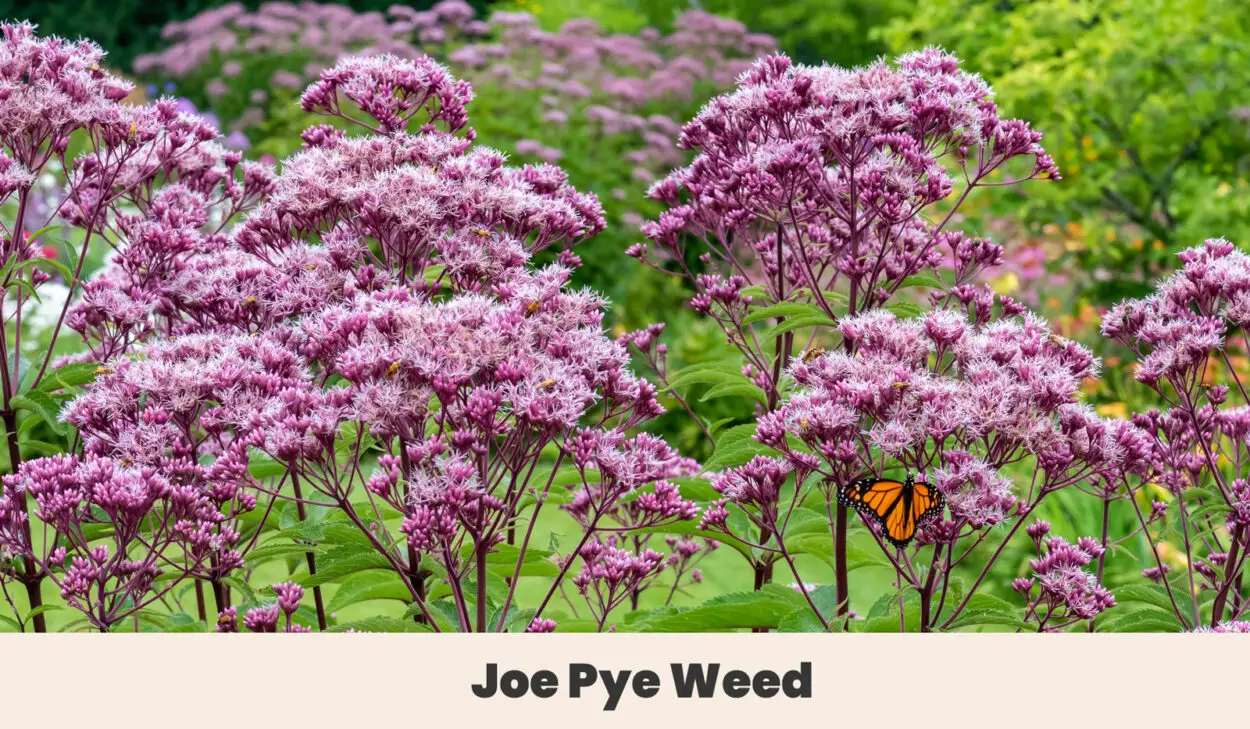
Butterfly lovers will be delighted by the visitors that Joe Pye weed brings to the garden. This American native produces spires of densely packed mauve-pink flowers, all richly scented and abundant in nectar.
It’s an easygoing kind of flower capable of growing in just about any type of soil provided it gets enough water – and it’ll thrive in boggy areas that would smother other wildflowers. Consider it for rain gardens and beside ponds or streams.
| Botanical Name: | Eutrochium purpureum |
| Growth Rate: | Fast |
| Native Range: | Eastern and Central United States |
| Hardiness Zones: | 4a to 9b |
| Soil Needs: | Moist soils of most types including clay |
| Exposure: | Full sun to partial shade |
| Blooming Period: | Mid-summer to early fall |
| Water needs: | Moderate to high |
7. Jasmine (Jasminum officinale)
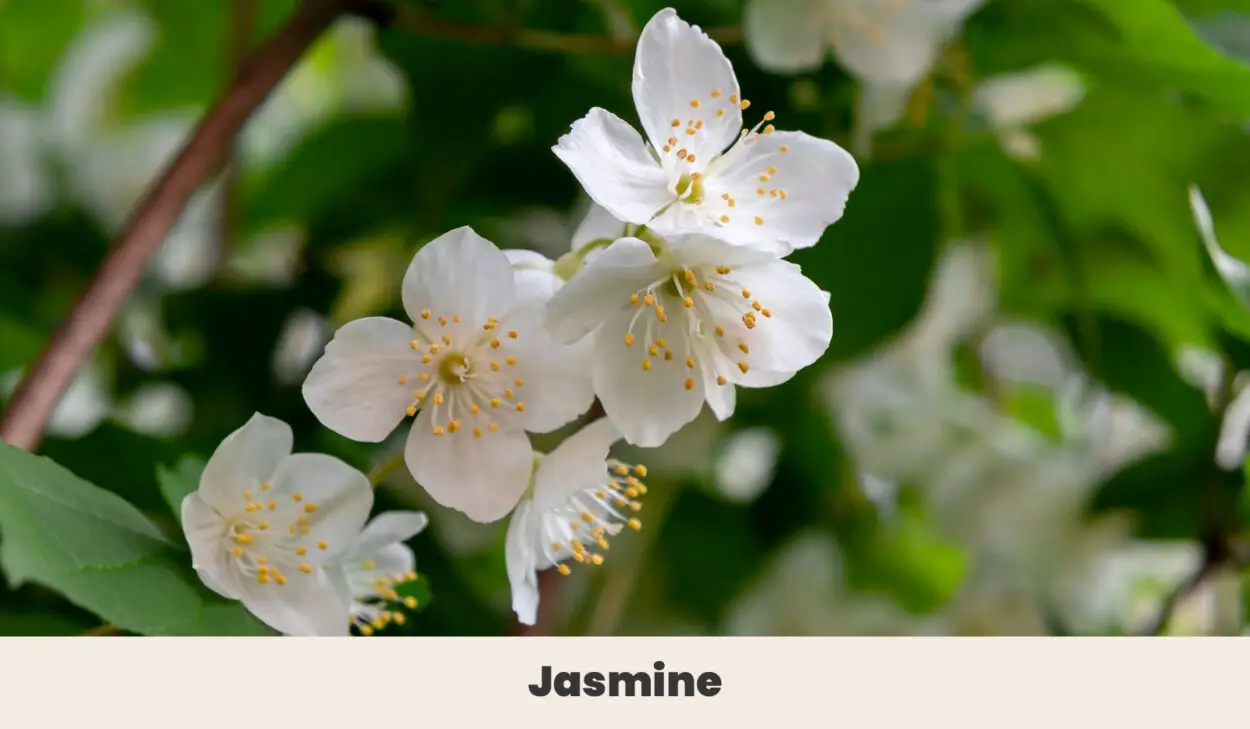
Sweet-scented Jasmine is one of the fastest-growing and most fragrant flowers you can plant in a warm climate garden. They bloom all through the growing season, from spring to fall, with delicate star-shaped flowers that produce prodigious quantities of fragrance.
Even one small vine, woven through another tree or over a trellis, can scent an entire neighborhood from dusk to dawn. The flowers are also edible, particularly delicious when added to tea.
| Botanical Name: | Jasminum officinale |
| Growth Rate: | Fast |
| Native Range: | The Caucasus to Central China |
| Hardiness Zones: | 7b to 10a |
| Soil Needs: | Most types |
| Exposure: | Full sun to partial shade |
| Blooming Period: | Spring to Fall |
| Water needs: | Moderate |
8. Johnny-jump-up (Viola tricolor)
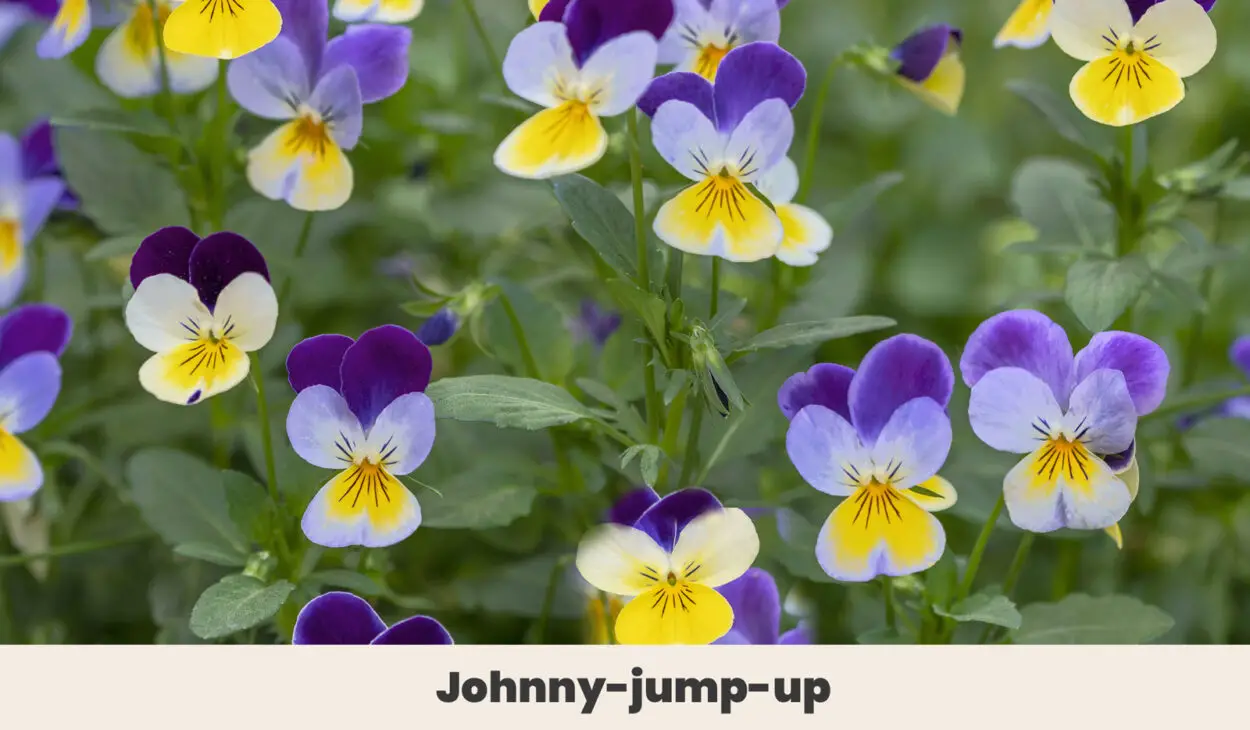
Also known as the tricolor wild pansy, this sweet little flower has been a wildflower garden favorite since the Middle Ages. It produces lovely purple and gold flowers, no larger than a postage stamp.
They were once valued for their medicinal properties and used to treat just about any ailment, ranging from heart problems to epilepsy, asthma, and skin disease. Today they bring a crisp minty flavor when used as a garnish for summer salads and fancy cocktails.
| Botanical Name: | Viola tricolor |
| Growth Rate: | Fast |
| Native Range: | Europe and Asia |
| Hardiness Zones: | 2a to 9b |
| Soil Needs: | Moist, well-draining soils of most types |
| Exposure: | Full sun to partial shade |
| Blooming Period: | Spring to summer |
| Water needs: | Moderate |
9. Jupiter’s Distaff (Salvia glutinosa)
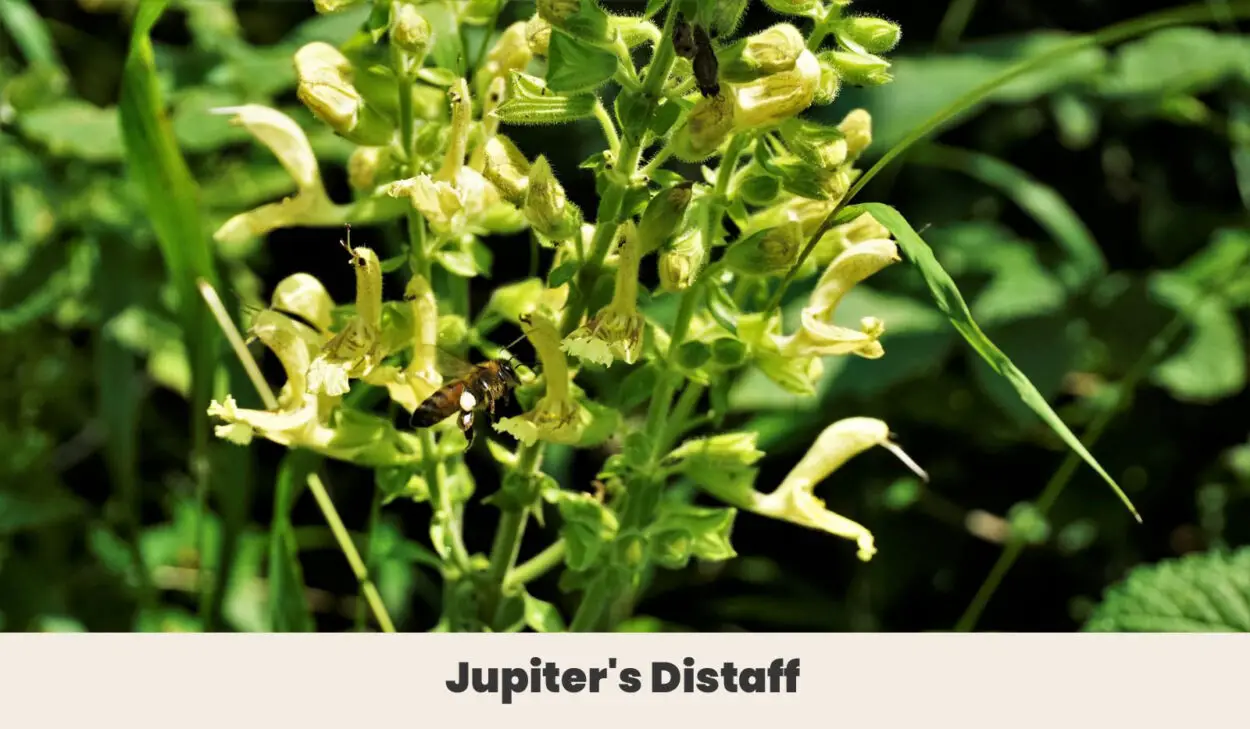
Jupiter’s distaff is one of the stranger salvias, a yellow blooming perennial that will reach around four feet. It breaks out in a sweat once the weather warms, covering its foliage and stems in a thick, sticky gum.
Even the long flowering stalks become tacky to the touch. This syrupy substance is a nice treat for a small selection of bugs and a death trap for others.
| Botanical Name: | Salvia glutinosa |
| Growth Rate: | Fast |
| Native Range: | Europe to Western Asia |
| Hardiness Zones: | 4 to 8 |
| Soil Needs: | Well-draining sandy or loamy soils |
| Exposure: | Full sun to partial shade |
| Blooming Period: | Summer |
| Water needs: | Moderate |
10. Jupiter’s Beard (Centranthus ruber)
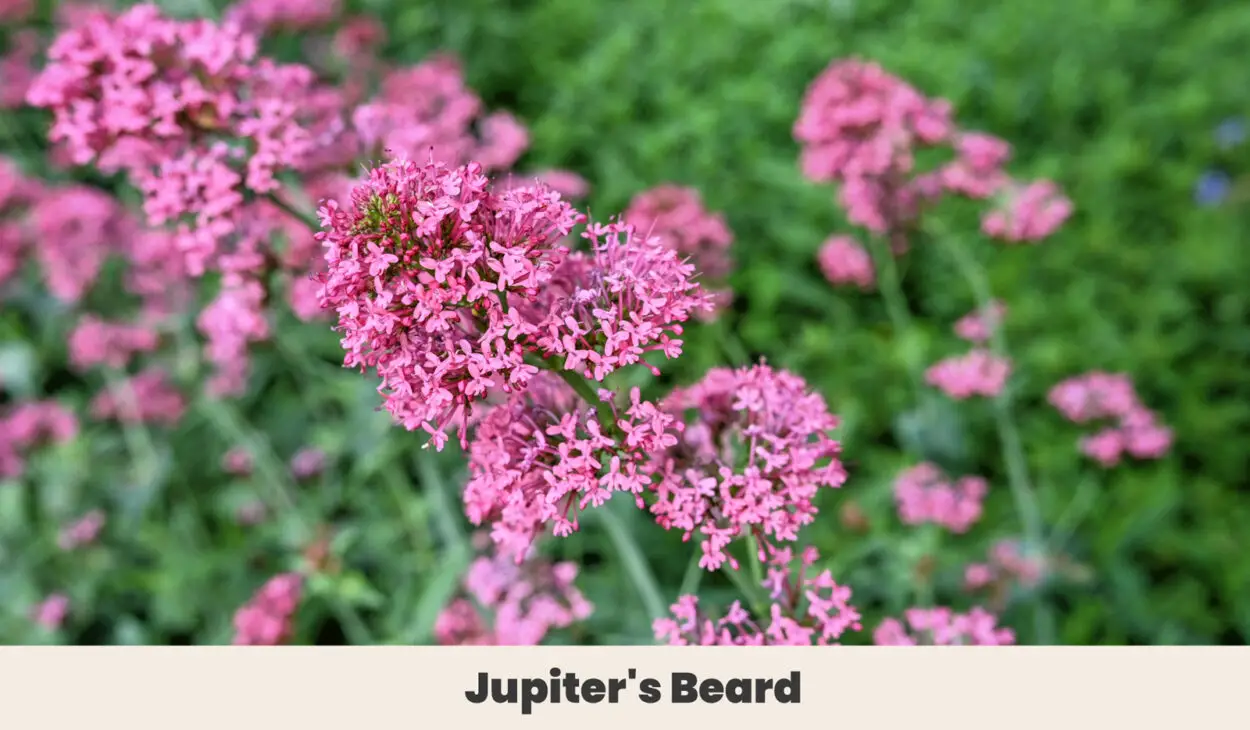
A form of valerian, Jupiter’s beard is as formidable as the name suggests. It’s a hardy grower that laughs in the face of drought, erosion, or low-fertility soils to produce massive dense heads of vibrant scarlet flowers.
Hummingbirds, bees, and butterflies adore Jupiter’s beard, and seed-eating birds love the seeds it makes come fall. Be warned – this is a common invasive weed in much of the world, so check before you plant lest it spread to untouched parts of your area.
| Botanical Name: | Centranthus ruber |
| Growth Rate: | Medium |
| Native Range: | Mediterranean |
| Hardiness Zones: | 5 to 8 |
| Soil Needs: | All soil types prefers alkaline soil |
| Exposure: | Full sun to partial shade |
| Blooming Period: | Late spring through to early fall |
| Water needs: | Low, drought tolerant |
11. Jerusalem Artichoke (Helianthus tuberosus)
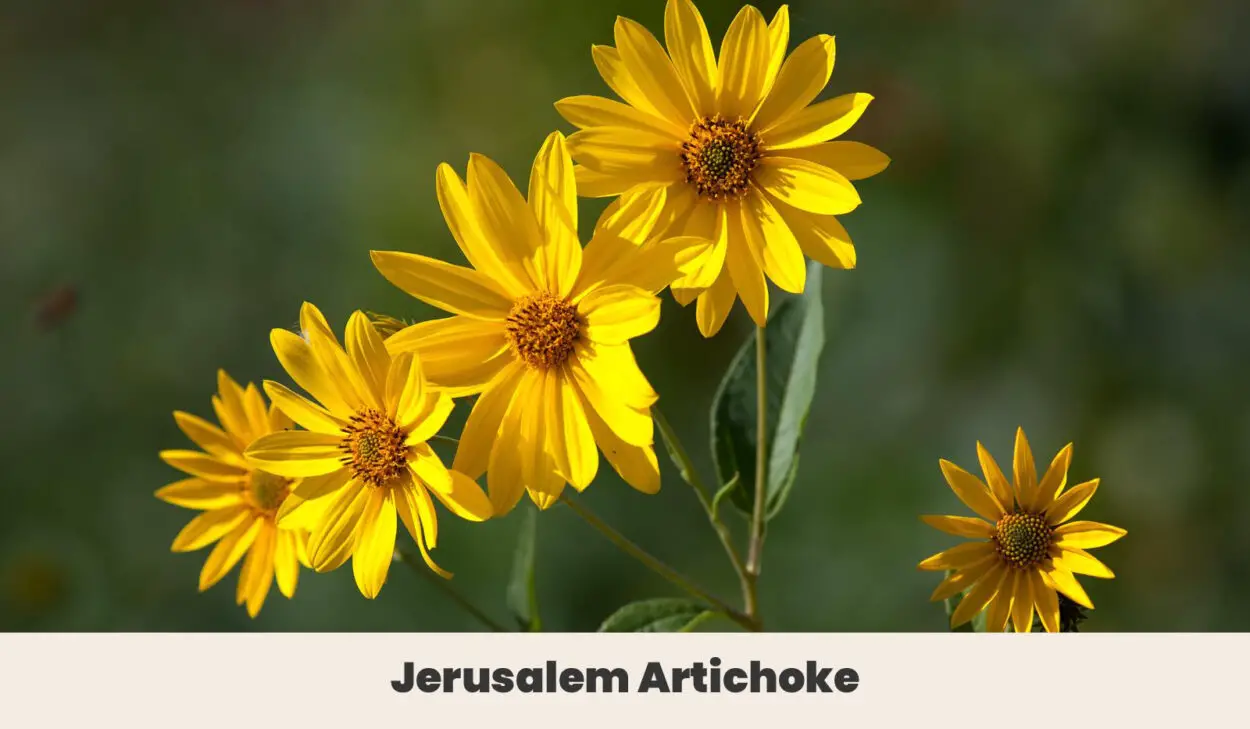
Neither an artichoke nor a native of Jerusalem, this American native sunflower is a gorgeous radiant flower in pure rich gold. Their sunny blossoms can reach ten feet high and half a foot across, drawing butterflies as a flower and all manner of hungry songbirds once they go to seed.
But the real treasure these plants produce is beneath the soil. They produce a tuber somewhere between a potato and a ginger root, a key food for native people that’s both delicious and nutritionally rich in fibre.
| Botanical Name: | Helianthus tuberosus |
| Growth Rate: | Fast |
| Native Range: | Western United States |
| Hardiness Zones: | 3a to 9b |
| Soil Needs: | Moist, well-draining soils |
| Exposure: | Full sun to partial shade |
| Blooming Period: | Summer to fall |
| Water needs: | Low to moderate |
Final thoughts
Jazzy flowers jam out in the garden, a jostling jamboree of flowers, butterflies, and bees. Jocular and jubilant, there’s such joy in their jade leaves and jewel

